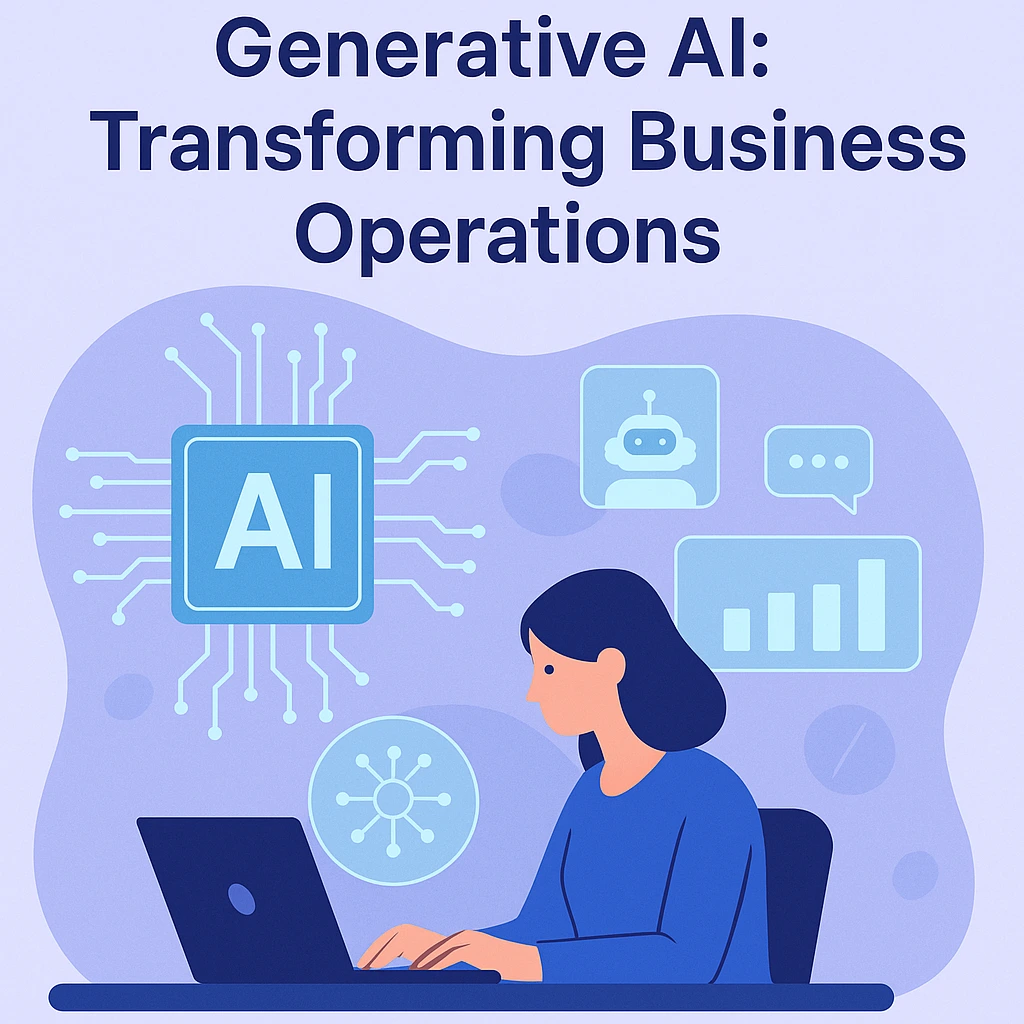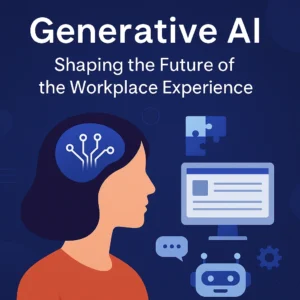Generative AI has emerged as one of the most groundbreaking technological advancements in recent years. From producing realistic images to creating human-like text and automating complex processes, generative AI is transforming how businesses operate. In this blog, we’ll explore what generative AI is, how it works, its applications in business, and how it can drive innovation and growth.
Understanding Generative AI: The Basics
Generative AI refers to a class of machine learning models designed to create new content based on existing data. Unlike traditional AI, which is often used for classification, prediction, or recognition tasks, generative AI generates entirely new outputs, making it capable of producing original text, images, audio, and more. This is a significant leap forward, as it moves beyond simply analysing data and into the realm of creativity and content creation.
Some popular examples of generative AI models include GPT-3 (and its newer iterations like GPT-4), OpenAI’s DALL·E, and DeepMind’s AlphaFold. These models have been trained on vast datasets, learning patterns, structures, and relationships within the data. Once trained, they can generate outputs that mimic human-like creativity and understanding, making them incredibly powerful tools for businesses.
How Does Generative AI Work?
Generative AI relies on sophisticated machine learning techniques, most notably deep learning and neural networks, to learn from large amounts of data. Here’s a breakdown of how it works:
- Data Collection: Generative AI models are trained on large datasets that can include anything from text (like books, articles, and websites) to images, sounds, and even video. These datasets contain a wealth of information that the AI uses to understand the underlying patterns and structures.
- Training the Model: The model learns by recognising the statistical relationships within the data. For example, a text-based model like GPT-3 learns grammar, sentence structure, tone, and context from vast amounts of text data. Similarly, an image generation model like DALL·E learns how to create realistic images by analysing millions of existing images.
- Generation: After being trained, the model is capable of generating new content. When given a prompt, the AI can create unique, human-like outputs. For example, you could ask a model like GPT-4 to write an article about generative AI, and it would generate an entirely new, coherent piece of text based on what it has learned.
Applications of Generative AI in Business
Generative AI is a versatile tool that can be applied across numerous industries, bringing significant benefits to businesses. Here are some of the most common use cases:
1. Content Creation
Generative AI is already transforming the way businesses produce content. It can automate the creation of blog posts, articles, marketing copy, product descriptions, and more. By generating high-quality text at scale, businesses can save time and resources while improving content production efficiency.
For example, a company could use a generative AI tool like GPT-4 to write product descriptions for an e-commerce site or generate blog posts on various topics related to its business. With the ability to generate unique content quickly, businesses can focus on higher-level strategy and creativity.
2. Customer Support
Generative AI is revolutionising customer service by powering intelligent chatbots and virtual assistants. These AI-powered systems can handle customer inquiries, provide real-time responses, and assist with troubleshooting. Unlike rule-based chatbots, generative AI can engage in more dynamic, context-aware conversations, making customer support interactions feel more human-like.
For instance, a company could implement a generative AI chatbot to respond to customer emails, resolve common queries, and guide users through complex troubleshooting steps without the need for human intervention.
3. Product Design and Prototyping
Generative AI can assist in the design process by generating new product concepts or prototypes based on specific inputs. For example, AI-driven tools can assist engineers and designers by suggesting innovative designs for products, parts, or even entire systems.
With generative design software, engineers can input the desired specifications (e.g., weight, material, strength) and let the AI generate multiple design options. This process enables the creation of highly optimised, efficient designs that would be difficult to conceive manually.
4. Personalisation
One of the most powerful applications of generative AI is its ability to personalise content and experiences for customers. By analysing user data, businesses can use generative AI to create tailored recommendations, product suggestions, and even dynamic pricing models based on individual preferences.
For example, a streaming platform can use generative AI to recommend content to users based on their viewing history, while an online retailer might generate personalised product recommendations to increase conversion rates.
5. Marketing and Advertising
Generative AI is also a game-changer for marketing campaigns. It can create personalised email marketing content, social media posts, and ads that resonate with specific audience segments. By analysing customer data and historical performance, generative AI can produce highly targeted marketing materials, maximising the effectiveness of campaigns.
AI can also assist in automating A/B testing for ads or landing pages, helping businesses quickly determine which content performs best.
Benefits of Generative AI for Businesses
The benefits of adopting generative AI in business are vast and multifaceted:
- Increased Efficiency: By automating tasks like content creation, customer service, and product design, businesses can significantly reduce the time and effort required to complete these tasks manually. This frees up employees to focus on higher-level strategic activities.
- Enhanced Creativity: Generative AI can provide fresh, innovative ideas that human creators might not have considered. It can inspire new ways of thinking and lead to creative breakthroughs.
- Cost Savings: By automating repetitive and time-consuming tasks, businesses can save money on labour and operational costs. Additionally, generative AI tools can help reduce waste by optimising designs and processes.
- Scalability: AI can help businesses scale their operations without the need for additional human resources. Whether it’s generating thousands of personalised product descriptions or handling an influx of customer support requests, generative AI can handle large-scale tasks efficiently.
- Improved Decision Making: Generative AI can generate insights based on data analysis, helping businesses make more informed, data-driven decisions. By understanding patterns in customer behaviour, market trends, and internal processes, businesses can refine their strategies for greater success.
Challenges and Considerations
Despite the promising advantages, there are a few challenges businesses should consider when implementing generative AI:
- Data Privacy and Security: Since generative AI relies on large datasets, businesses must ensure that the data they use is secure and compliant with privacy regulations, such as GDPR or CCPA.
- Quality Control: While generative AI can produce impressive results, the quality of the generated content may vary. Businesses need to implement quality control mechanisms to ensure that AI-generated outputs meet their standards.
- Ethical Concerns: The rise of AI-generated content raises questions about the ethical implications of using machines to create content that was once solely the domain of humans. Concerns about the impact on jobs, creativity, and authorship must be addressed.
Conclusion
Generative AI is undoubtedly reshaping industries, offering businesses the tools to enhance creativity, automate processes, and improve efficiency. By understanding its capabilities and adopting it thoughtfully, companies can unlock new opportunities for growth, innovation, and competitive advantage.
As generative AI continues to evolve, its impact will only grow. Businesses that embrace this technology early on will be well-positioned to capitalise on its potential, transforming the way they create, interact with customers, and operate in the digital age.




